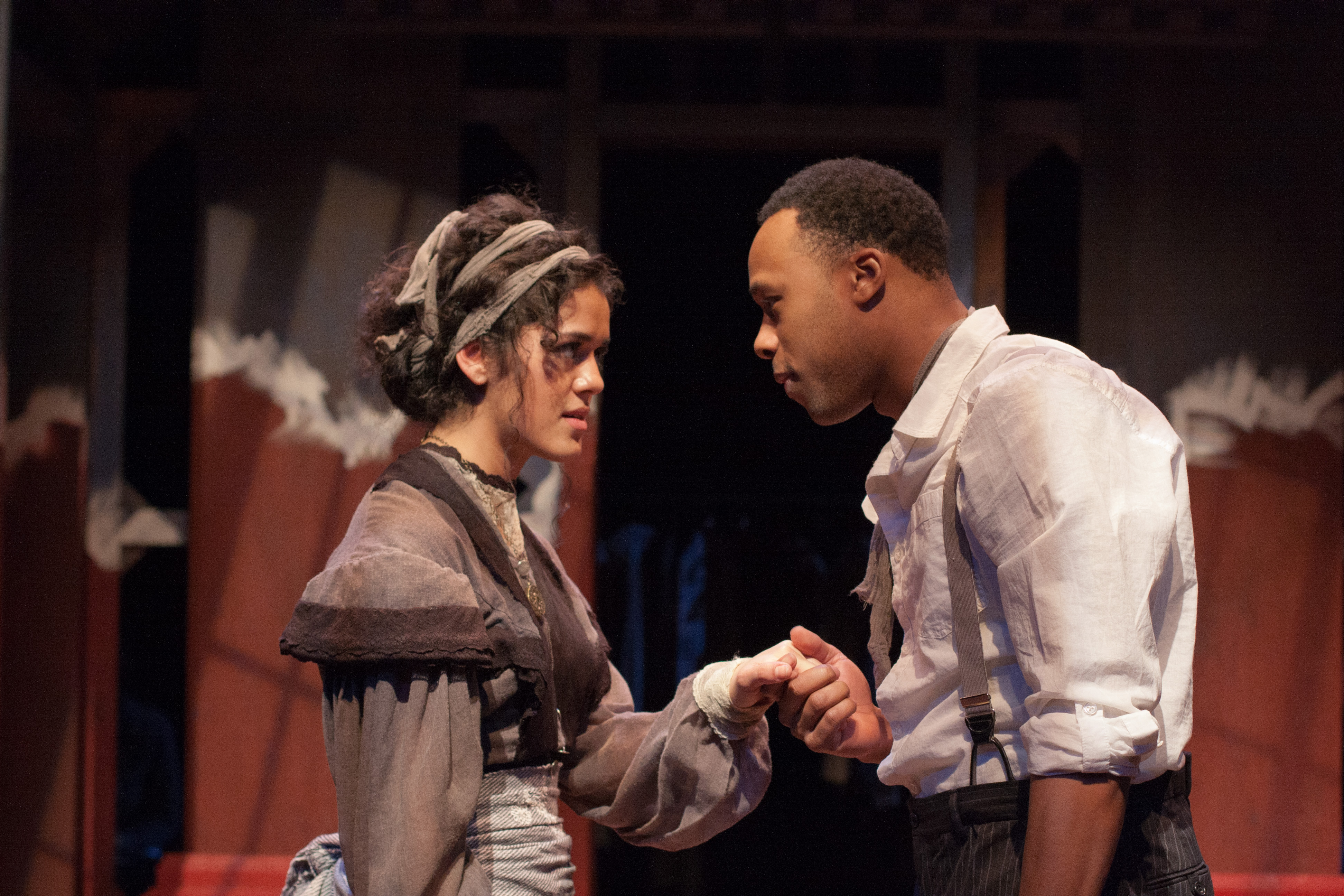SALT LAKE CITY — Sally Hemings is believed to have been the mistress of President Thomas Jefferson; she was a slave on his plantation and there is evidence to suggest that he fathered her children. In The Third Crossing, however, the audience is shown that we can’t really know her story—there is no complete record; and we realize that we have no right to judge her or any other person based upon what we see on the outside.
In Third Crossing, Sally’s story is staged between scenes from our day: stories of couples who experience racism or race issues, two scenes of a professor giving a Sally Hemings lecture, and two presentations by Thomas Jefferson at the University of Virginia. I wasn’t sure what was fact and what was fiction, but that actually fits with the theme. Each story was interesting and they wove together well.
Thomas Jefferson was played by Bob Nelson, and I enjoyed his interpretation of that historical character. He came across as kind and even-tempered, and when I wondered whether he should have shown a greater range of emotion and volume, he was shortly thereafter described by the character of Madison (one of Jefferson’s alleged sons) in a way that exactly described Nelson’s portrayal. The speeches that Debora Threedy has written for Jefferson, each discussing race and the acceptance of the status quo, make him come across as not much of a leader, at least not a very brave one. I most enjoyed Nelson in the scene when he was cleaning his violin and talking with great sweetness to Sally (Kalyn West). Later on, when director Jerry Rapier had their son sit in the same place, holding his violin, the irony and poignancy was not lost on me.
Rapier had some great concepts to work with in this show. One scene is a collection of court cases when a “white” person married a “black” person despite their government’s laws. Rapier’s staging of this scene, which I will butcher if I try to describe it, brought the focus toward the audience and really highlighted the ridiculousness of such laws. And I wondered, case after case, whether these stories were true. I loved the story with the couple sitting on a bench center stage; they were a young couple with twins and their interaction offered a good dose of hope. Deena Marie Manzanares and Carleton Bluford played this sweet couple, showing off their babies on their cell phone and getting me through the heavier parts of the show.
There were some artistic choices that were a little lost on me, though. One was the elementary-school-type blackboard, which Rapier had his actors use to clearly explain the meaning of “third crossing.” (“Third crossing” was the name given to the practice or idea of eliminating “black blood” over three generations.) The blackboard was a good prop in that scene, but then it is overused to (I think) highlight points, change locations, give titles to scenes, and ultimately just confuse me with too much information. Although it was useful at times, I felt like the blackboard would have been a better tool if it had been used less. Also, I wasn’t sure why Rapier chose to mark the end of scenes with the ding of a bell; it seemed unnecessary. Randy Rasmussen‘s set confused me, as well. The main structure worked well as the stately Monticello house, but I was confused by the two-tone paint job and jaggedly horizontal line. There’s a concept behind each detail, I’m sure, and as a reviewer, I did my best to figure it out. But still, I don’t get it. I wish I knew, too, why Rapier and Rasmussen chose to allow the audience to see the actors sitting behind the set.
I enjoyed all of the actors in this show, most of which played several parts. But Kalyn West was my favorite as the mysterious Sally Hemings. West brought her character to life with her vulnerability; it felt like she held nothing back. She played young Sally and the aged Sally both so gracefully and strong. It must have been a hard job to cast this show, with very specific physical descriptions, some actors needing to portray a variety of ages and characters, and everyone had to sing. I was so impressed by each and by Plan B for bringing them together.
Aside from a few stumbled lines, I enjoyed this show that made me think. The circumstances of Sally Heming’s life, and the other scenes Threedy incorporates, were fascinating and well done. I would enjoy seeing this show again.
[box type=”shadow”]The Third Crossing plays at the Studio Theater at the Rose Wagner (138 W 300 S, Salt Lake City) daily at 8:00 PM through March 18th. This performance is sold out. For more information, http://planbtheatre.org/thirdcrossing.htm.[/box]

